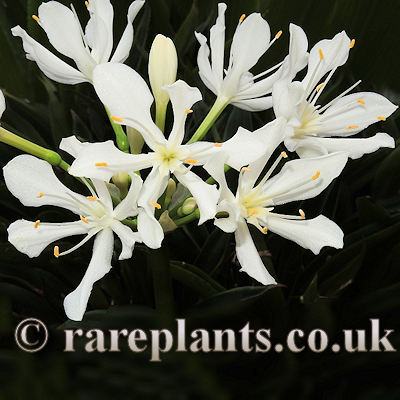Description
(syn. Eurycles amboinensis)
Proiphys amboinensis makes spectacular foliage with large, lustrous, glossy and almost circular leaves which look like a Hosta should look! The leaves can be anything up to 25cm wide and are borne with superb, scented, white flowers each with a yellow throat. The flowers are 5 cm wide each with up to 18 flowers in a cluster on a 50cm tall stalk very much in the manner of an Agapanthus. The flowers are very long-lasting. The leaves die away totally in the dormant season when the bulbs can be dry stored, and this dry storage is needed to initiate flowering later in the cycle.
In cultivation this one needs both warmth and water (when it is in growth) but it is readily grown in a greenhouse and can be dry-stored somewhere frost-free, such as a spare bedroom, over winter. A shed or garage is NOT suitable, nor is an unheated greenhouse, this needs freedom from frost/cold, over the winter. Damp or wet winter storage is not suitable either.
After its dry storage it then needs a good, warm start, when a decent temperature can be maintained and light levels are more favourable, in late Spring around about March/April, depending on how much warmth you can provide. It will then start its leaf growth. When growing, it loves a very fertile, but well-drained soil, with lots of water (and feed) running through it, high humidity and mid-shade is good also.
The genus name refers to the fact that the seeds germinate while still on the plant, whilst the species is named after the island of Ambiona, (now Ambon) , in Indonesia though it is found wild over a wide area from Thailand and New Guinea to northern Australia. It is also naturalised from Sri Lanka and the Philippines to other parts of Australia and across many Pacific Island nations.
Trivial names include Cardwell lily and Northern Christmas lily and you might even see this described as a Pancratium, in some very old and inaccurate literature.
Introduced to our lists October 2019


